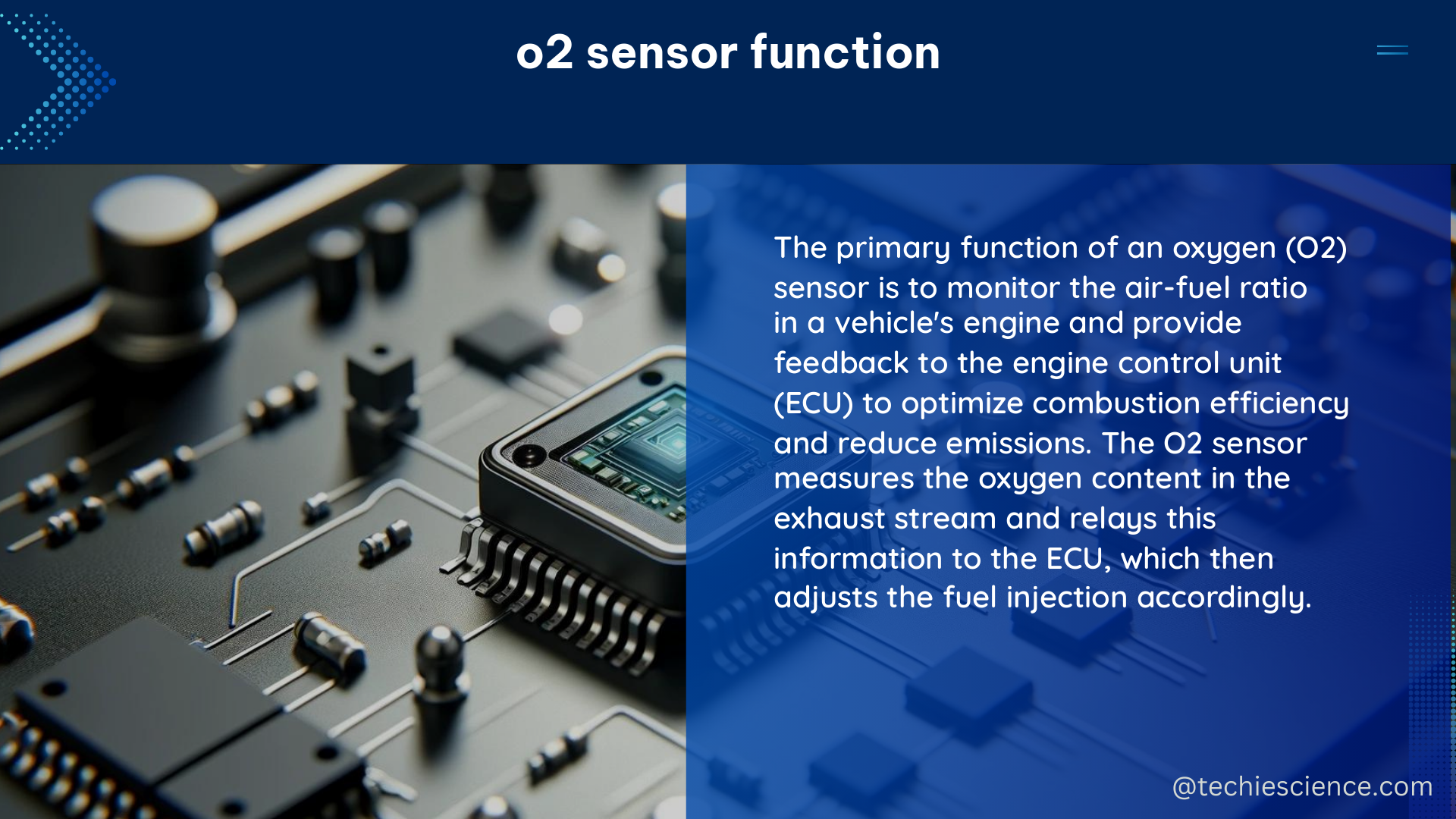Oxygen sensors, also known as O2 sensors, are critical components in modern internal combustion engines, responsible for monitoring the air-fuel ratio and providing valuable data to the engine’s computer for optimal performance and emissions control. These sensors measure the amount of unburnt oxygen in the exhaust, enabling the engine’s electronic control unit (ECU) to make real-time adjustments to the air-fuel mixture.
Understanding Narrowband and Wideband O2 Sensors
There are two primary types of oxygen sensors: narrowband and wideband.
Narrowband O2 Sensors
Narrowband sensors are designed to operate within a specific air-fuel ratio range, typically around the stoichiometric ratio of 14.7:1 (14.7 parts air to 1 part fuel). These sensors provide a simple binary output, indicating whether the air-fuel ratio is rich (less than 14.7:1) or lean (greater than 14.7:1). Narrowband sensors are commonly used in older vehicles and offer basic functionality for maintaining the ideal air-fuel ratio.
Wideband O2 Sensors
In contrast, wideband sensors can measure a much broader range of air-fuel ratios, typically from 9.65:1 to 20:1. This allows for more precise tuning and control of the engine’s air-fuel mixture. Wideband sensors provide a linear output voltage that corresponds to the actual air-fuel ratio, enabling the ECU to make more accurate adjustments for improved performance and fuel efficiency.
Technical Specifications of O2 Sensors

The technical specifications of oxygen sensors can vary significantly depending on the manufacturer and model. Here are some key parameters to consider:
Measurement Range
The measurement range of an O2 sensor determines the minimum and maximum values it can detect. For example, the Oxygen Sensor Spot SP-PSt3-NAU from Presens has a measurement range of 0 to 100% oxygen in both dissolved and gaseous phases.
Limit of Detection
The limit of detection (LOD) is the lowest concentration of oxygen that the sensor can reliably measure. The Oxygen Sensor Spot SP-PSt3-NAU has a limit of detection of 0.03% oxygen.
Resolution
The resolution of an O2 sensor refers to the smallest change in oxygen concentration that the sensor can detect. The Oxygen Sensor Spot SP-PSt3-NAU has a resolution of ±0.01% O2.
Accuracy
Accuracy is a measure of how close the sensor’s readings are to the true oxygen concentration. The Oxygen Sensor Spot SP-PSt3-NAU has an accuracy of ±0.4% O2 at 20.9% O2 and ±0.05% O2 at 0.2% O2.
Drift
Drift is the gradual change in the sensor’s output over time, even when the oxygen concentration remains constant. The Oxygen Sensor Spot SP-PSt3-NAU has a drift of less than 0.03% O2 within 30 days.
Factors Affecting O2 Sensor Performance
Several factors can influence the performance and lifespan of oxygen sensors, including:
- Exhaust Temperature: O2 sensors must operate within a specific temperature range, typically between 300°C and 800°C, to function correctly.
- Exhaust Gas Composition: The presence of contaminants, such as lead, sulfur, or silicone, in the exhaust can degrade the sensor’s performance over time.
- Sensor Aging: As O2 sensors age, their response time and accuracy can deteriorate, requiring periodic replacement.
- Electrical Interference: Electromagnetic interference from other vehicle components can disrupt the sensor’s signal, leading to inaccurate readings.
Optimizing Engine Performance with O2 Sensors
By leveraging the data provided by oxygen sensors, the engine’s ECU can make real-time adjustments to the air-fuel ratio, resulting in the following benefits:
- Improved Fuel Efficiency: Maintaining the optimal air-fuel ratio can enhance the engine’s combustion efficiency, leading to better fuel economy.
- Reduced Emissions: Proper air-fuel ratio control helps minimize the production of harmful exhaust emissions, such as carbon monoxide, hydrocarbons, and nitrogen oxides.
- Enhanced Engine Performance: Precise tuning of the air-fuel mixture can improve engine power, responsiveness, and overall drivability.
Upgrading to Wideband O2 Sensors
For some applications, such as the 2013 Harley Davidson motorcycle mentioned earlier, upgrading from a narrowband to a wideband O2 sensor can provide significant benefits. Wideband sensors offer a broader range of air-fuel ratio measurement, allowing for more accurate tuning and optimization of the engine’s performance.
When upgrading to a wideband O2 sensor, it’s essential to ensure compatibility with the vehicle’s ECU and electrical system. Additionally, the sensor’s technical specifications, such as measurement range, accuracy, and response time, should be carefully evaluated to ensure optimal performance.
Conclusion
Oxygen sensors are the unsung heroes of modern engine management systems, providing critical data that enables the ECU to maintain the optimal air-fuel ratio for improved performance, fuel efficiency, and emissions control. By understanding the differences between narrowband and wideband sensors, as well as the key technical specifications, you can make informed decisions to optimize your engine’s performance and ensure compliance with environmental regulations.
References
- Upgrading O2 Sensors on a Harley Davidson Motorcycle
- Oxygen Sensor Spot SP-PSt3-NAU Technical Specifications
- Air-Fuel Ratio Sensors and Oxygen Sensors: What’s the Difference?

The lambdageeks.com Core SME Team is a group of experienced subject matter experts from diverse scientific and technical fields including Physics, Chemistry, Technology,Electronics & Electrical Engineering, Automotive, Mechanical Engineering. Our team collaborates to create high-quality, well-researched articles on a wide range of science and technology topics for the lambdageeks.com website.
All Our Senior SME are having more than 7 Years of experience in the respective fields . They are either Working Industry Professionals or assocaited With different Universities. Refer Our Authors Page to get to know About our Core SMEs.